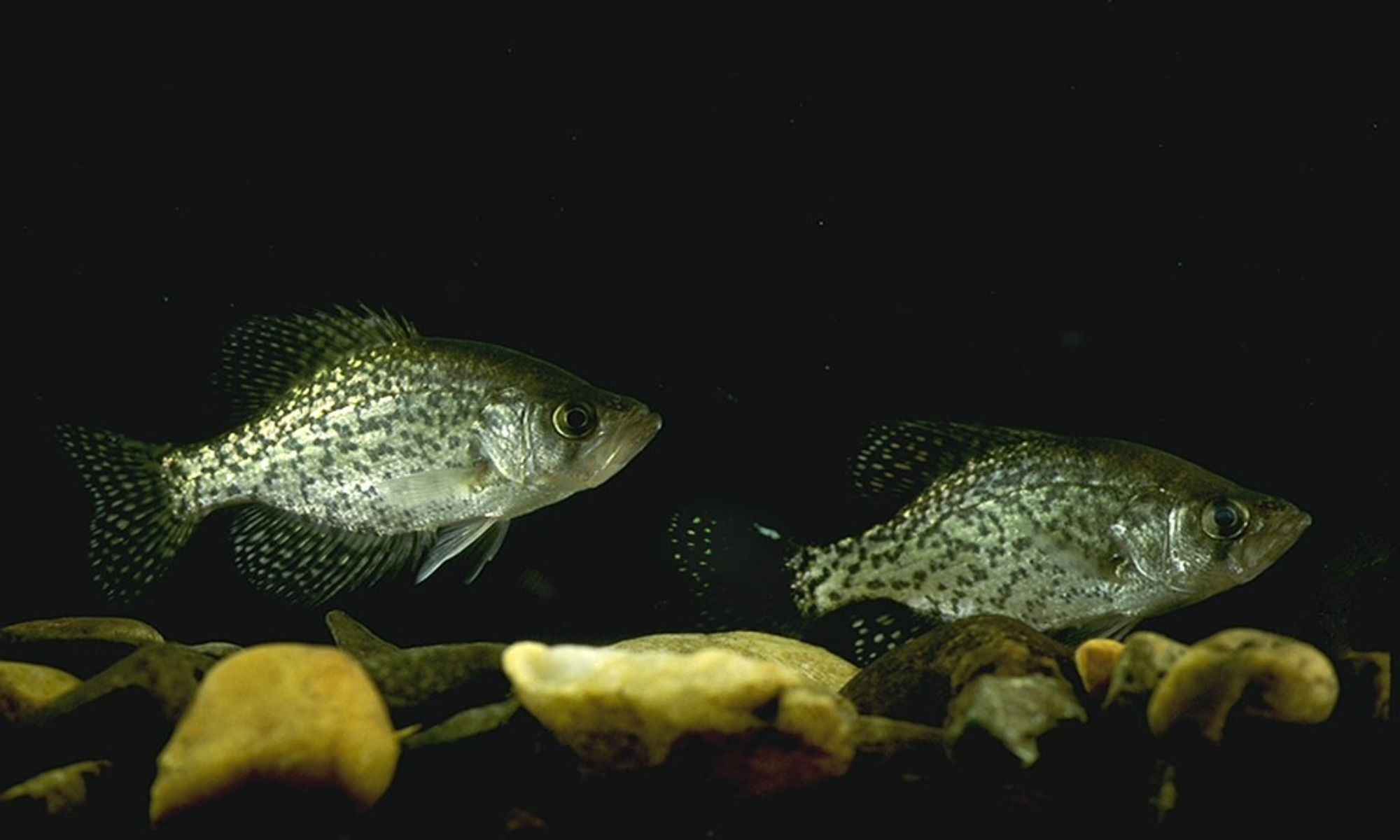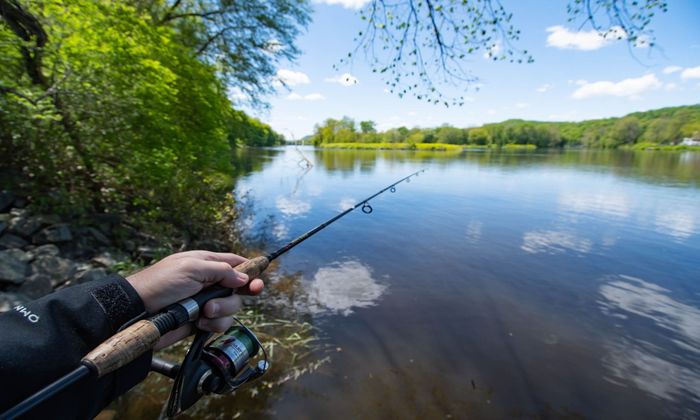Fishing Techniques: Fish for Crappie Like a Pro
Get the best fishing technique for crappie here. We have the details for your next crappie fishing trip.

The crappie is a long-time angler’s favorite because they're plentiful, easy to catch and taste delicious. Whether it's black or white crappie, these freshwater fish feed on aquatic insects, minnows, and the young of other species.
Crappie, also known as “papermouths” for their unusually tender mouths, are schooling fish that will likewise congregate with other similar panfish. They prefer to dwell near areas with vegetation, submerged structures like fallen trees. Although they prefer to stay in the water column, they will move closer to the shore to feed during twilight hours.
During the spawning season, they can be found in larger numbers in shallow waters. Since they don't become entirely dormant during winter, fishing for crappie is a year-round affair.

Fishing Techniques for Crappie
The Rig
Another reason why crappie is so popular is that you don't need a special rod and reel for catching them. Your rig will be determined by the waters you choose to fish and what depth the crappie are at. However, for most purposes, an ultralight rod and spinning reel with a 4 to 10-pound test mono is best for when crappie are in deeper or open waters. This setup can help you aim precise casts to where the fish are schooling.
The hook you use matters though because as we mentioned earlier, crappie have very soft mouths that can be damaged easily by tight hooksets. On the other hand, they have large mouths for their size, at least much larger than other panfish such as bluegill. Therefore, they can easily tear a hook free if it’s too small or exerts too much force.
If you choose to use live bait, nothing beats a minnow on a #6 hook with a small split shot and slip bobber. However, you can move up to #1 or 2/0 if using larger minnows. Make sure to hook the minnow through both lips or right by the topmost dorsal fin.
As for the slip bobber, this can help you pinpoint depths without sacrificing your casting accuracy. It can provide a visual cue when crappie take your bait because they’re not known to be aggressive biters like largemouth bass. Instead, crappie are purposeful (although quite lethargic) feeders and won’t chase anything very far – which means you’ll need to suspend bait right in front of their face for some time. One way to do this is by using jigs.

Jigs

Crappie are ambush predators, so when it comes to artificials, jigs are one of the favored lures to use. They come in various sizes, colors, and action – and you’ll need to find which types are best for your local waters.
Small jigs around 1/8 ounce usually work the best for most situations since crappie aren’t a quick and reactive species. If you’re in clear waters, go for natural colors, but if you’re fishing in murky waters or at night, go with brighter more visible colors. If the waters are cold, you’ll want to focus on slower presentations and smaller jigs.
You’ll need to find the right falling motion for your jig, so make sure to tie it with a loop knot at the top of the eye so that the jig tilts forward. This allows the jig to move freely, naturally, and provides subtle movement that crappie are known to find irresistible. If using a jig with an artificial minnow, this method will lift the tail to make it act like the real thing.
The best jig is one that you’re confident in using, so try out several kinds, keeping in mind that speed and simplicity are what you’re going for. If you want to be ready for any crappie situation, carry a 1/64, 1/32, 1/16 and 1/8 ounce with you.
If you're fishing for crappie during spring and spawning season, you'll need to focus on cover, working your way through weeded areas or brush, jiggling the rod tip slightly to work it in. Jigs that swim or wobble are excellent choices, providing much-needed subtle action.
Have some other lure types on hand just in case you need to switch up your game. You can pack in some 1/8- to 1/4-ounce spoons, mini-crankbaits, and horsehead spinners for variety.
Don't Rock the Boat
If you’re up for it, you can try a popular summertime technique called spider rigging. It involves trolling with eight rods (or more) secured on rod holders. When the rods extend beyond your boat, it makes you look like a large spider on the water.
Spider rigging suspends lines vertically and targets docks, laydowns, and ledges. The advantage of this rig is that you can have multiple jigs or minnows at different depths, offering different choices of colors and presentations to crappie. You can cover huge areas of water quickly as well. However, this is a complex technique that may require a buddy and you’ll need to check local regulations as well.
You can combine spider rigging with tightlining, which is when you use a weighted line to place two hooks near or on the bottom so that they rest motionless with no horizontal movement. If you want to hook crappie schooling in the water column or near the bottom of structures or piles of brush, this is an effective technique.
The most important part of this technique is holding your lure at a specific depth and speed, which is best achieved by not moving in the water. Remember, crappie are more interested in the way your jig suspends or stalls in the water.
Crappie Casting
Baitcasting is a classic crappie technique that’s great for covering a wide area of water. This works especially well in shallow waters during the spring, which involves casting long and staying a good distance away from the target area. Again, using a light action rod on ultralight spinning reel with some high-quality mono is an effective choice. Simply cast your lure toward submerged cover in the shallows and slowly retrieve.
Crappie are more likely to strike if you’re slow and steady with your jig or minnow, so don’t retrieve too fast. Once they bite, be careful when setting the hook to avoid tearing their papermouths – just do a light flicking of the wrist or tighten the line, keeping the line taut until you can slowly lift them out onto your boat.
That's Some Deep Crappie
Depth is important when trying to fish for crappie, so using a topographical map or a depth finder can increase your chances. Crappie are typically found between three and six feet of water but when summer is at its peak, they'll go deeper and will only surface to feed during dawn and dusk.
If you're using an electronic depth finder while drift fishing, monitor the bottom depth so that your lures are in the optimal strike zone as long as possible. You’ll want to stay parallel to the shore, keeping an eye out for submerged holes or stumps. Pre and post-spawn crappies can congregate for long periods in a specific area and depth, so finding them is key, as they won't move around very often.
Get That Crappie
Now that you've learned a few tips and techniques on how to catch crappie, it's time to get on a boat and head on to your local waters. If any of our tips improved your fishing game, we'd love to hear from you!




